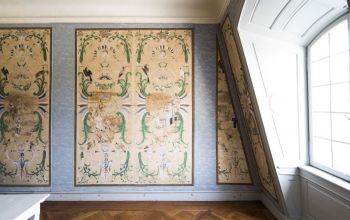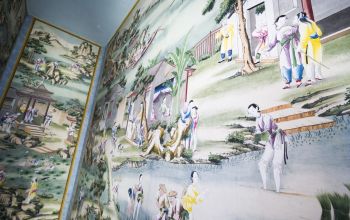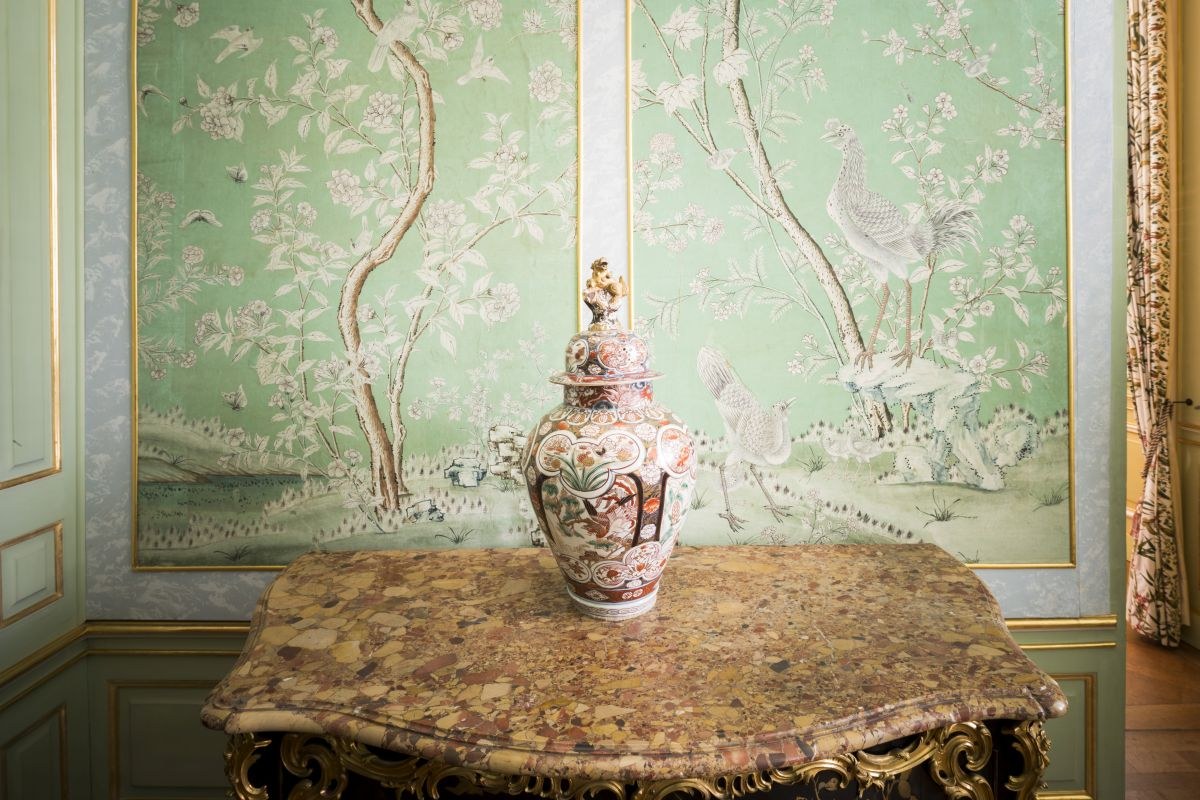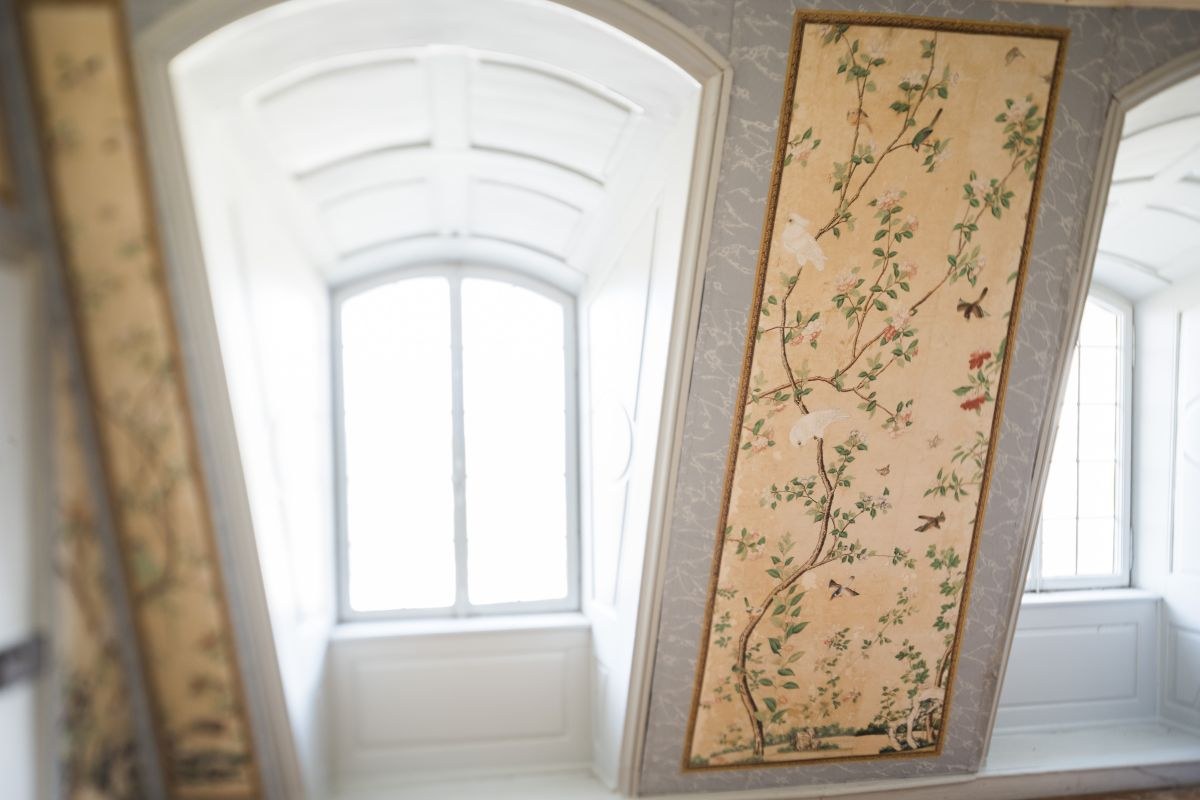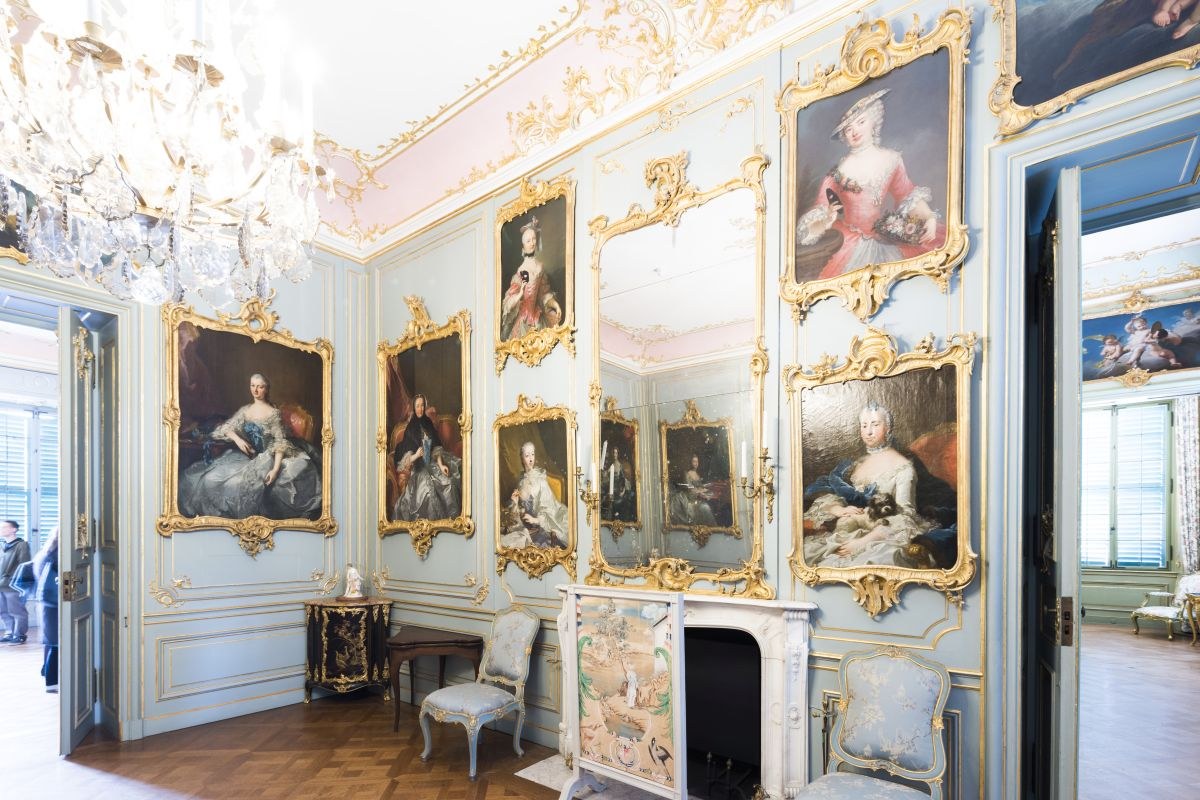Walls as a field of expertise - Wilhelmsthal Palace, Museumslandschaft Hessen Kassel (Part 2)
Wilhelmsthal Palace is particularly worthwhile for those visitors who love details. Like the furniture, the wallpapers demonstrate the fashions of the era in which they were made. Sometimes they are green, like in the "Poison Room", and sometimes they are red or yellow, but almost every room in Wilhelmsthal Palace is designed differently. One special feature deserves particular attention: the floral elements. Flowers such as roses and poppies can be seen on all of the wallpapers. Many of them appear so lifelike that at first glance, you might even think they’re dried flowers. They look so similar that it’s quite astonishing to discover they’re painted on. Their lifelike appearance is intentional and a reflection of the era, says the Director of the German Wallpaper Museum in Kassel, Dr Astrid Wegener. The wallpapers come from a period in which explorers travelled the world from Europe and often returned with either sketches of plants or the real specimens. The enthusiasm for foreign plants was mirrored in the tastes of the time, and the wallpapers in Wilhelmsthal reflect this. These details can be found in almost every room in the palace. In the Audience Chamber, there are parrots that, almost as if they were real, are sitting on branches protruding from the walls. One almost has the feeling of standing in a forest - "also a widespread motif", says Kallaste. Plants and birds, the sight of which are now commonplace, were once special and exotic. It was therefore only natural that the European aristocracy brought these motifs into their palaces.
Wallpaper conservator Kadri Kallaste has a story to tell about almost every room and piece of wallpaper. Standing in the alcove of one room, she points at the ceiling. The patterns of plants there are faint. "A plasterer left that for us there," she says. It is one of the secrets of Wilhelmsthal Palace. Either the master craftsman never finished his work, or someone removed his drawings. "We don't know why," Kallaste says. Today, they are simply there, witnesses to an era when Wilhelmsthal Palace was bustling, providing insight into the life and work of the time.
It was an era marked by wars and unrest that also prevented the palace’s owners from ever living there. Shortly after its completion, wars came between them: Napoleon occupied Germany and used the palaces in Hessen for his family. It is the great events of world history, pivotal points for life and suffering at the palace, that are reflected here. And for today's visitors, they represent a stroke of luck: the palace never fulfilled its original purpose and has therefore never been rebuilt or renovated. The furnishings are still almost entirely preserved in their original state. Rooms and halls tell of past splendour and forgotten normality that today seems almost as exotic as the flowers and plants on the wallpaper did to those who observed them at the time. It is a treasure that conservators such as Kadri Kallaste can enjoy today and preserve for the future. And, of course, for the visitors who come here searching for details.
Previous article in the series:Walls as a field of expertise - Wilhelmsthal Palace, Museumslandschaft Hessen Kassel (Part 1)
Next article in the series:
Walls as a field of expertise - Wilhelmsthal Palace, Museumslandschaft Hessen Kassel (Part 3)
Gallery
Published on 18.01.2019
Share on Twitter?
By clicking on this link you leave the Kultur in Hessen website and will be redirected to the website of Twitter. Please note that personal data will be transmitted in the process.
Further information can be found in our privacy policy.
Share on Facebook?
By clicking on this link you leave the Kultur in Hessen website and will be redirected to the website of Facebook. Please note that personal data will be transmitted in the process.
Further information can be found in our privacy policy.




